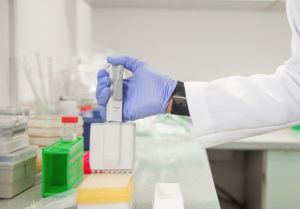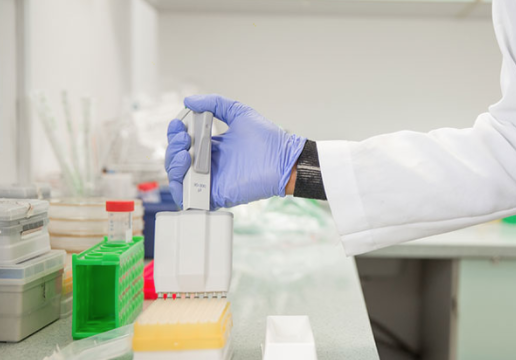
To detect the presence of specific proteins in a solution, a widely used biochemical assay called an ELISA is used. The acronym expands to Enzyme-Linked ImmunoSorbent Assay – indicating the use of enzymes to quantify immunogenicity. This assay is used in several common forms, the most simple of which is known as the direct ELISA. In this version of the assay, an antigen is immobilized onto the wells of an ELISA plate. Then, this antigen is detected by an antibody directly conjugated to an enzyme, such as horseradish peroxidase (HRP). Due to the straightforward nature of this assay, it is considered the least error prone among ELISA types. It contains the least number of steps, so it is typically faster. The primary disadvantage to this technique is the fact that the antigen immobilization is not specific. This means that any protein can bind nonspecifically to the assay plate, creating a higher likelihood for nonspecific signals to create background noise.
The indirect ELISA technique has higher sensitivity than the direct ELISA, since a second antibody is used for signal amplification. Once an antigen is adsorbed to the assay plate wells, an unlabeled primary antibody binds specifically to the immobilized antigens. Then, a second antibody, which is conjugated to an enzyme, binds to the primary antibody to indicate a signal. This type of ELISA is more flexible than its direct counterpart because different primary antibodies can be used for binding with a single secondary antibody. Of course, increasing the complexity of the assay presents its own new problems. In addition to the assay taking longer to complete, cross reactivity between the secondary antibody can create background noise.
A very popular form of ELISA used for more complex protein samples is called a sandwich ELISA. Instead of an antigen binding to the assay plate, an antibody is directly bound to the plate (capture antibody). Then, the antigen is washed over the primed plate and binds to the capture antibodies. From that point, the assay can be treated as a direct or indirect ELISA by binding detection antibodies with or without conjugation, respectively. The greatest advantage of the sandwich ELISA is the sensitivity of the assay. With two antibodies required for antigen detection, only specific and precise interactions are reflected in the assay output. To achieve this high specificity, antibodies need to be optimized to work as a pair (to avoid cross reactivity) and can usually be purchased in ELISA kits. Due to this highly specific technique, samples don’t require such stringent purity standards is in the direct/indirect methods. Thus, this technique is often used for more complex protein samples.
An ELISA assay of yet higher complexity is the competition/inhibition ELISA, sometimes called the blocking ELISA. In this method, a known antigen is first used to coat the assay plate. Then, the plate is blocked (usually with unrelated protein) and washed. The unknown antigen is then added to the plate with the detection antibody, then the plate is washed once again. Then, a secondary detection antibody, which is conjugated, is also added to the plate. If this secondary antibody gives a signal by binding to the primary detection antibody, this means that the initial sample concentration of unknown antigen was low, since the primary detection antibody was bound to the control antigen as opposed to being washed off. If the concentration of antigen was high, then the signal would be low, since the primary detection antibody would be absent because it had been washed off by binding to the unknown antigen instead of the bound control antigen (bound to the plate). It is this inverse signal relationship and the many steps involved in this type of ELISA that make it the most complex, although it is very specific and does not require high purity.
The ELISA assay is a very robust immunoassay that’s very customizable for different protein projects. It’s important to understand the right type of procedure for your specific protein detection and quantification.




